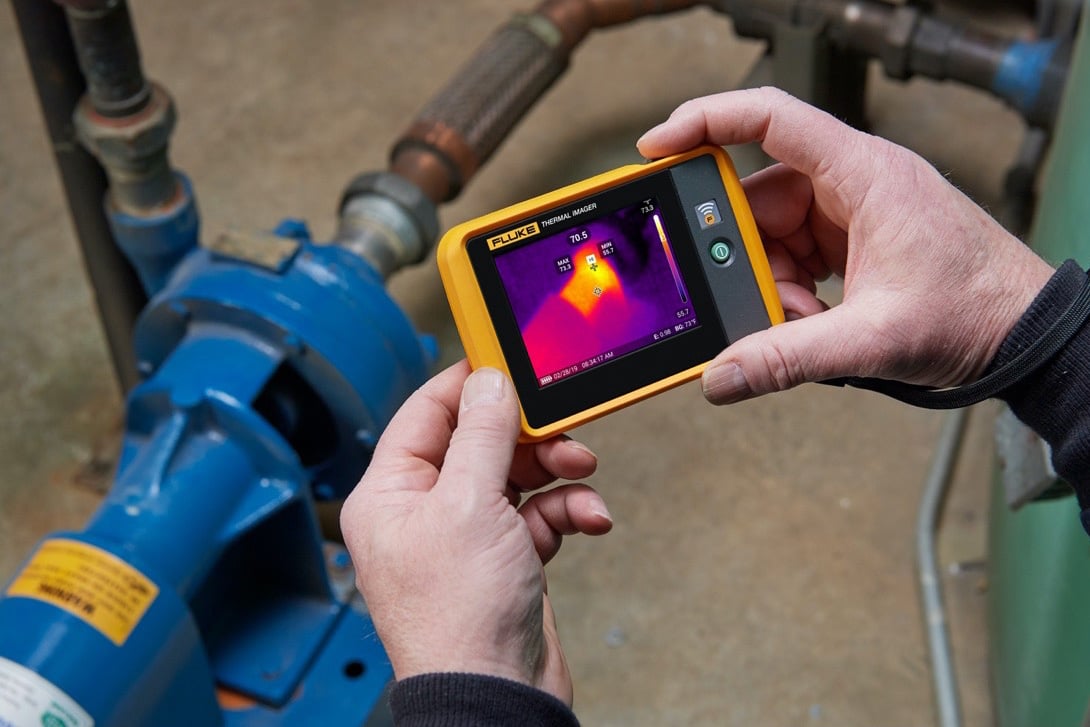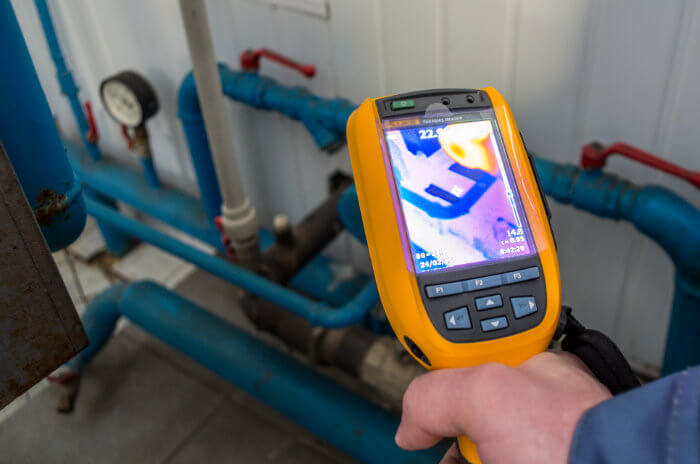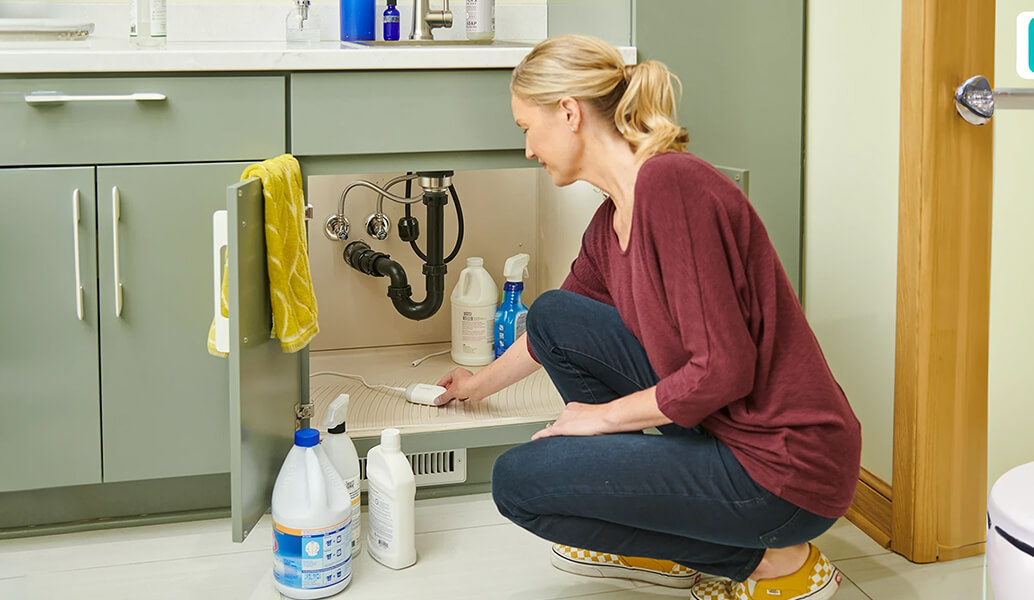Comprehensive Overview to Water Leak Detection for Property Owners and Services
Wiki Article
Ingenious Solutions for Very Early Discovery of Water Leaks in Structures and Infrastructure
As the stability of buildings and infrastructure is extremely important, the challenge of very early discovery of water leakages has stimulated innovative options that guarantee to reinvent the way we secure against prospective problems. From advanced leak detection technologies to the deployment of IoT sensing units for real-time surveillance, the landscape of leak prevention is developing swiftly. Artificial intelligence formulas use a glimpse right into the future of leakage prediction, while thermal imaging presents a non-intrusive approach for determining covert leaks. Automated water circulation analysis systems are reshaping just how leaks are determined and resolved, leading the way for an aggressive technique to water leakage detection. Each of these options holds the key to making certain the integrity and durability of our constructed environment, motivating a shift in the direction of a more sustainable and reliable future.Advanced Leak Discovery Technologies
Advanced leakage detection modern technologies, geared up with advanced sensing units and formulas, play an essential function in quickly identifying and identifying water leaks in various setups. Electro-magnetic sensing units can recognize modifications in electro-magnetic fields created by water, providing yet an additional layer of leakage detection capability.
IoT Sensors for Real-Time Tracking
In the world of modern-day water leak detection, the assimilation of IoT sensors for real-time monitoring stands for a crucial improvement in improving aggressive leakage discovery abilities. These sensors use continual tracking of water systems, offering real-time information on water circulation prices, stress variations, and temperature changes. By leveraging IoT innovation, these sensing units can find even the tiniest abnormalities in water usage patterns, enabling very early identification of prospective leakages prior to they rise right into major concerns.IoT sensors send information to a central system, where advanced algorithms evaluate the details and create alerts or notices when abnormalities are identified. This real-time monitoring capacity allows property proprietors or facility supervisors to without delay deal with leaks, minimizing water damage, lowering repair service expenses, and preserving water sources.
In addition, IoT sensing units can be integrated with building management systems, permitting automated feedbacks to identified leakages, such as turning off water shutoffs or turning on pumps to mitigate the impact of leaks. On the whole, the application of IoT sensing units for real-time monitoring substantially improves the effectiveness and performance of water leakage discovery in structures and framework.
Machine Learning Algorithms for Leakage Prediction

One trick advantage of utilizing artificial intelligence for leak prediction is its capacity to constantly learn and improve its accuracy in time. As more data is gathered and fed into the formula, it can improve its forecasts and adapt to transforming conditions, inevitably raising the integrity of leak detection systems.
In addition, maker knowing algorithms can aid in determining subtle signs of leaks that may go undetected by standard monitoring approaches. water leak detection. By analyzing complex data embed in real-time, these formulas can give very early warnings and alerts, permitting prompt treatment and precautionary maintenance to minimize prospective water damages and linked costs
Using Thermal Imaging for Leak Detection
Thermal imaging modern technology supplies a promising approach for spotting water leaks in different systems and infrastructures. By utilizing infrared radiation click to read more and temperature variances, thermal imaging cams can recognize surprise leakages that are not easily visible to the naked eye. When water leaves from pipelines or frameworks, it commonly alters the temperature level of the surrounding location, creating temperature differentials that thermal video cameras can capture. These temperature irregularities are after that translated right into visible photos, highlighting the specific location of the leak.Among the vital advantages of thermal imaging for leak detection is its non-intrusive nature. Unlike standard methods that may need damaging into wall surfaces or floors to situate leakages, thermal imaging permits for non-destructive testing. This not just conserves time and minimizes expenses yet additionally reduces interruption to the building or facilities being evaluated. Furthermore, thermal imaging can rapidly check large locations, providing a comprehensive review of potential leakage resources in a timely way. On the whole, making use of thermal imaging modern technology enhances the effectiveness and accuracy of water leakage discovery, making it a useful device for keeping the stability of structures and frameworks.
Automated Water Circulation Analysis Equipments
Just how can automatic water flow analysis systems reinvent the discovery and monitoring of leaks in various systems and infrastructures? Automated water circulation analysis systems provide an aggressive method to leakage discovery by continually keeping an eye on water flow prices and patterns. By developing standard information, these systems can promptly determine discrepancies that may indicate a leakage, making it possible for punctual intervention to protect against substantial damage.These systems use advanced formulas to examine real-time data and provide instant signals when anomalies are discovered, enabling swift activity look here to be taken. In addition, automatic water circulation analysis systems can be integrated with building monitoring systems or IoT platforms, enhancing overall performance and allowing remote tracking capabilities.
Additionally, the information gathered by these systems can be utilized for predictive maintenance purposes, aiding to recognize possible powerlessness in the infrastructure before leakages take place. Overall, the execution of automated water circulation evaluation systems can dramatically improve leak discovery and administration practices, inevitably resulting in set you back financial savings, decreased water wastefulness, and boosted sustainability in structures and infrastructure.

Final Thought
Finally, the integration of sophisticated leak detection technologies, IoT sensing units, device discovering algorithms, thermal imaging, and automatic water circulation evaluation systems offers innovative look at this now remedies for early detection of water leakages in structures and facilities. These innovations make it possible for real-time surveillance, prediction of leaks, and reliable discovery methods to avoid water damages and wastage. Executing these options can aid in keeping the integrity and sustainability of water systems in various settings.Report this wiki page